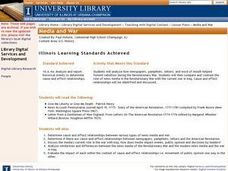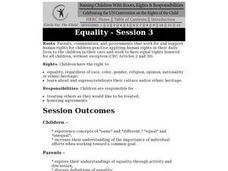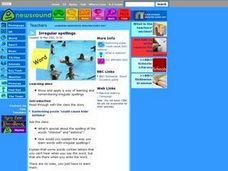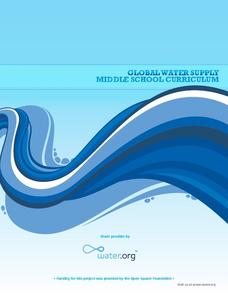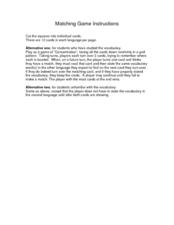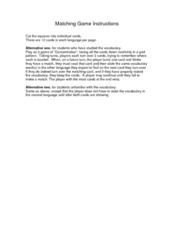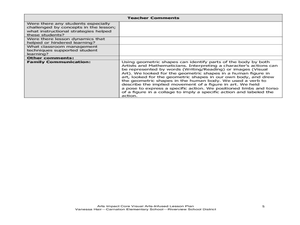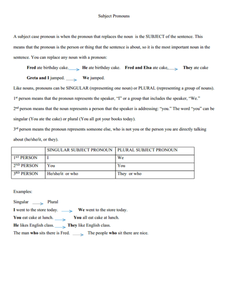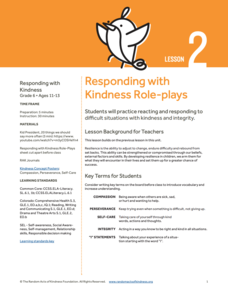Curated OER
Media and War
Students investigate how written media and word of mouth helped foment rebellion during the Revolutionary War. They compare and contrast that with the role of the news media in the war in Iraq focusing on cause and effect relationships.
Curated OER
American Indian Cooking Before 1500
Students read and discuss an article about Native American cooking practices before 1500. In small groups they recreate a recipe for pemmican and sample the results. They discuss how food preparation and ingredients differ from modern...
Curated OER
Entry 1 Numeracy Practice--B
In this numeracy practice worksheet, students answer thirteen word problems by following the directives given as they read through each one.
Curated OER
Thanksgiving Friends
Students listen to teacher read alouds of books that include facts about Thanksgiving. They discuss what they are thankful for and share this discussion with another class through e-mail.
Curated OER
Geo Jammin' - Day 6, Lesson 20: Hail, Hail, the Gang's All Here
Students use shape puppets to review geometry content. They take turns singing songs, reading students poems, reciting class bulletin board notes and choral poems. They prepare for their summative assessments through play and interview...
Curated OER
Equality: Children's Rights
Students and parents participate in a variety of activities designed to help them explore the similarities and differences of people. They design and wear masks, sort attribute blocks, read stories, discuss the rights and...
Curated OER
Shape Buttons
In this math worksheet, students investigate the simple geometric shapes of circle, rectangle, oval, triangle and square by making a 6 page book. Students color and read the book about buttons of different shapes.
Curated OER
Sort Solid Figures
In this solid figures worksheet, students read the word problems about the solid figures and find the figure that follows the rule.
Curated OER
Irregular Spellings
Students know and apply a way of learning and remembering irregular spellings. Students show where irregular spellings can be found everywhere in our society today. Students tie in irregular spellings to silent letters as well.
Curated OER
Maus: Cubing Questioning Strategy
Maus is the text for a postreading activity that has class members using a cubing strategy to analyze, in depth, topics (racism, past and present, forgetting/remembering the Holocaust, representing the Holocaust) associated with Art...
Water
Global Water Supply Middle School Curriculum
We take a steady shower stream and clean drinking water for granted, but in many countries around the world, the lack of water or a clean water supply is responsible for higher sickness and death rates. Taking a closer look at the water...
Curated OER
Ornithology and Real World Science
Double click that mouse because you just found an amazing lesson! This cross-curricular Ornithology lesson incorporates literature, writing, reading informational text, data collection, scientific inquiry, Internet research, art, and...
Curated OER
Camping Concentration Game
Fun! Play some concentration games to help your French speakers develop vocabulary related to camping. There are two game options included. Your learners are sure to have fun and develop their vocabularies!
Curated OER
Vacation Concentration Game
How fun! Looking to develop your French speakers' vocabulary? Beginning French speakers match leisure/ vacation vocabulary terms with their definitions. There are two different matching games included here. What a great way to introduce...
Curated OER
Bodies In Motion: Shapes and Gestures
Students use geometric shapes to describe body parts. In this geometry lesson, students use geometry vocabulary as they discuss body parts. They practice drawing bodies using shapes based on a wooden model that is poised to show specific...
Savvas Learning
Pronouns
As part of their English grammar study, language learners engage in the games, exercises, and activities found in a 13-page packet that focuses on pronouns.
Pyro Innovations
Get into Shape
Shapes are so fun! Little ones explore, identify, and create shapes using tangrams or pattern blocks. The activity is intended to stimulate critical thinking while engaging learners through play and shape identification. Each child will...
EngageNY
Writing Division Expressions II
Division is division is division is division ... four different ways to write division. Scholars continue to learn about division expressions. They translate between several forms, including verbal phrases, expressions using the division...
Serendip
Get the Lead Out!
Around 500,000 children under the age of six suffer from elevated levels of lead in their blood in the United States. Scholars apply their knowledge about lead to a fun game. As they correctly answer questions, they move their pieces...
Habits of Mind
Thinking Interdependently
Transform your class into a team with a lesson about thinking and working interdependently. As they reflect on important roles for a group, elementary and middle schoolers learn to work together and think of ways that compliment each other.
EngageNY
Properties of Exponents and Radicals
(vegetable)^(1/2) = root vegetable? The fourth installment of a 35-part module has scholars extend properties of exponents to rational exponents to solve problems. Individuals use these properties to rewrite radical expressions in terms...
Random Acts of Kindness Foundation
Responding with Kindness Role-plays
Thank you. Excuse me. I'm sorry! Pupils watch a video about encouraging things people should say more often. Next, they work in small groups to develop a role-play based on a difficult situation. They perform their role-plays for the...
University of Colorado
Strange New Planet
The first remote sensors were people in hot air balloons taking photographs of Earth to make maps. Expose middle school learners to space exploration with the use of remote sensing. Groups explore and make observations of a new planet by...
University of Colorado
The Jovian Basketball Hoop
A radio receives radio signals, converts them to an electrical signal, then converts this signal to a sound signal, and amplifies the sound so people can hear it. Class members use this information to create a short-wave radio antenna...


